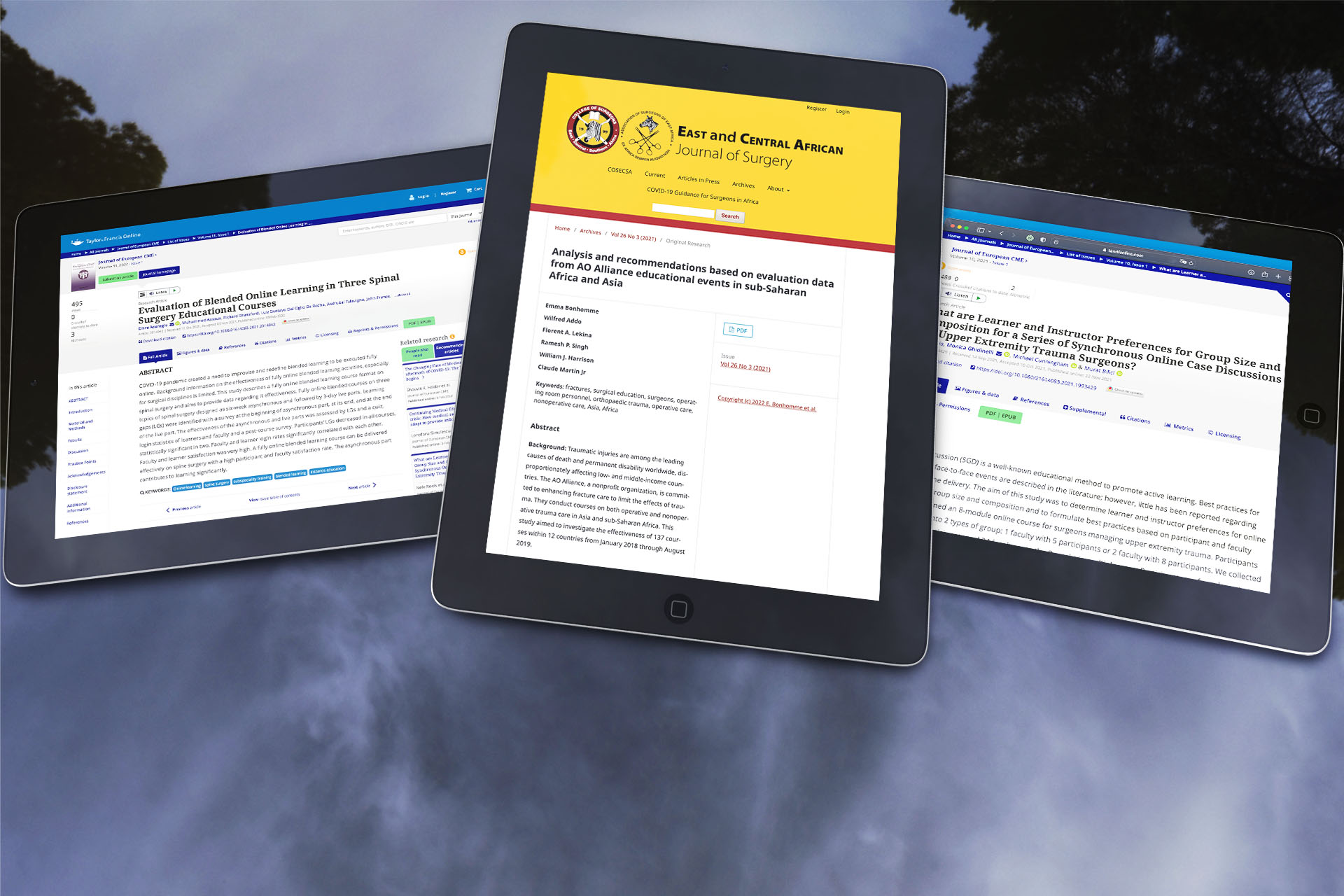New educational research publications available from clinical divisions and AO Education Institute

Surgeons from AO Trauma, AO Spine, and the AO Alliance have collaborated with the AO Education Institute to publish three articles in peer-reviewed journals.
In the article titled “What are Learner and Instructor Preferences for Group Size and Composition for a Series of Synchronous Online Case Discussions for Upper Extremity Trauma Surgeons?” AO Trauma member Nele Roels and coauthors analyzed feedback from 91 participants and 34 faculty of the eight-week, 2020 AO Trauma Online Course—Upper Extremity. Authors report that participants’ preference is 2 faculty with 4–5 participants, rotating to different faculty every week, and interacting with peers from different countries. Faculty had a slightly greater preference for 2 faculty with 8 participants (83%) than 1 faculty with 4–5 participants (74%) and were equally split between rotating to a different group every week and switching groups once after 4 weeks. In addition, eight modules delivered over eight weeks seems to be better suited for early-career surgeons but a challenge for more experienced surgeons.
The full open-access article is available here.
In the article titled “Evaluation of Blended Online Learning in Three Spinal Surgery Educational Courses,” AO Spine Education Commission Chairperson Emre Acaroglu and coauthors describe and critically analyses the three AO Spine courses at the AO Davos Courses 2020. The three courses were executed as a combination of six weeks of online asynchronous (self-directed) learning followed by around twelve hours of online synchronous learning. The study showed that participants’ learning gaps decreased, that a fully online blended learning course can be delivered effectively, and that the asynchronous part of such a course contributes significantly to learning.
The full open-access article is available here.
In the article titled, “Analysis and recommendations based on evaluation data from AO Alliance educational events in Sub-Saharan Africa and Asia”, AO Education Institute intern Emma Bonhomme and coauthors analyzed post-course evaluations of 137 AO Alliance courses administered between January 2018 and August 2019. The data suggest that the courses are highly valued by participants and faculty and there is a high demand for more courses. This suggests that the number of fracture management courses offered in low- and middle-income countries (LMICs) still does not match their needs.

